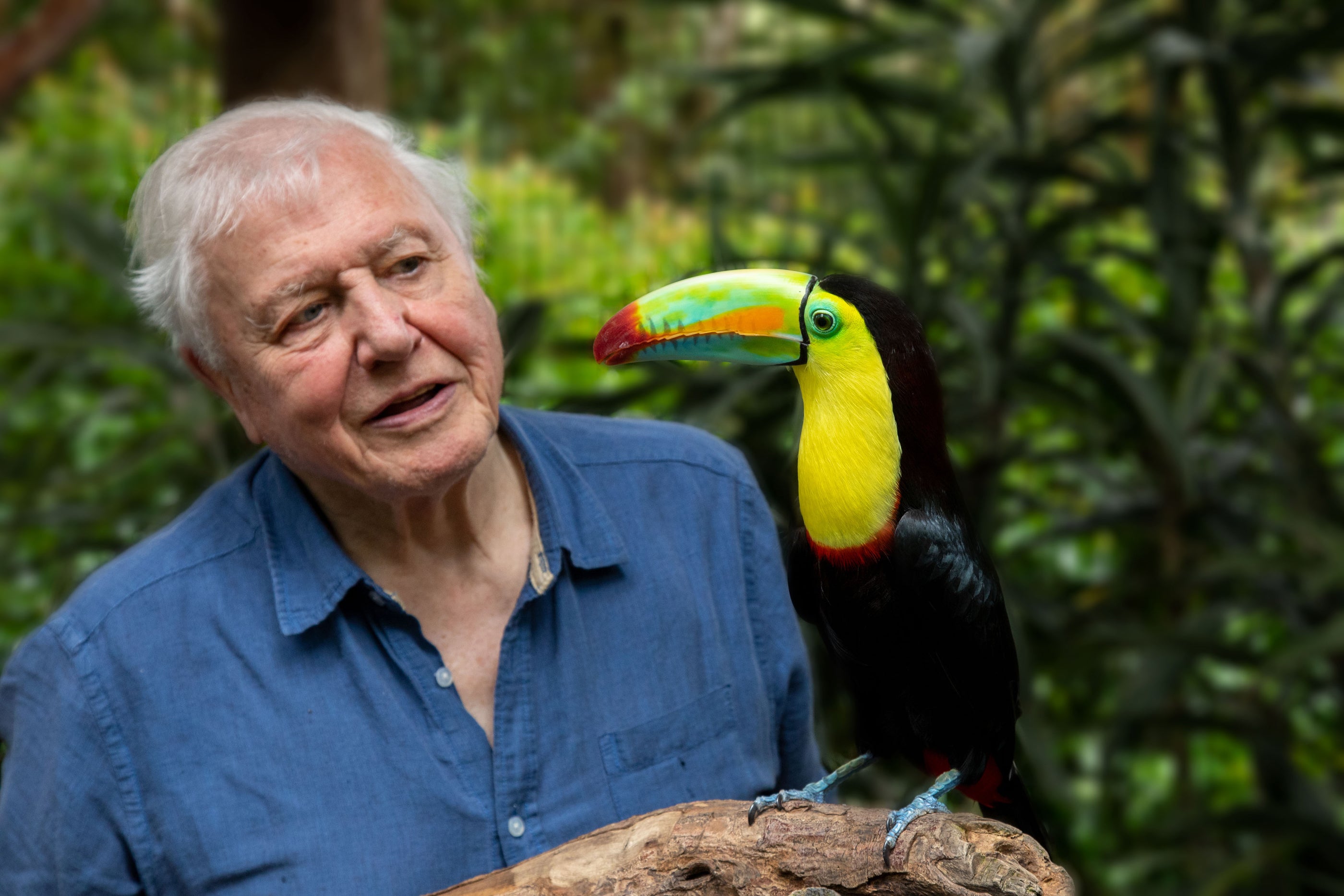Exploring our rainbow world through the eyes of Attenborough
Inspired by new Attenborough two-part series, A Life In Colour, Sarah Marshall rounds up some of nature’s most dazzling displays.

Your support helps us to tell the story
This election is still a dead heat, according to most polls. In a fight with such wafer-thin margins, we need reporters on the ground talking to the people Trump and Harris are courting. Your support allows us to keep sending journalists to the story.
The Independent is trusted by 27 million Americans from across the entire political spectrum every month. Unlike many other quality news outlets, we choose not to lock you out of our reporting and analysis with paywalls. But quality journalism must still be paid for.
Help us keep bring these critical stories to light. Your support makes all the difference.
Since the early days of his career, Sir David Attenborough has been eager to make a TV programme about animals and their use of colour. But the limitations of black and white TV sets all those years ago led him to put the idea on hold.
Finally, he’s been given the opportunity to indulge in nature’s powerful palette with new two-part BBC One series, A Life In Colour. Looking at the use of different colours as defence mechanisms, courtship tools and a means of displaying dominance, the programme travels from the rainforests of Costa Rica to the snowy slopes of Scotland.
In all their technicolour glory, nature’s best-dressed superstars are even more appealing. These are a few of the blinding acts set to dazzle on screen.
Indian peacocks
Adorned with feathers more fanciful than a Brazilian carnival dancer, peacocks will always steal the show. Fanning open to reveal a pattern of sapphire eyes (150 in total) and emerald streaks, their prized plumage might be head-turning, but it has more than an ornamental purpose.
Typical in the avian world, it’s the males who outshine their gender counterparts – but with good reason. When it comes to dating, they have to do all the work, putting on a bright display to attract the ladies – strutting, ruffling and eventually winning her over with good looks.
Although historically from India, peacocks can also be found much closer to home in the UK. A population has lived at Oxford Botanic Garden & Arboretum (obga.ox.ac.uk) since the 19th century, and there are currently 15 birds on the site. Visit between February and July for the best chance of seeing a display.
Andean flamingos
Deriving their colouration from the food they eat, Andean flamingos always look pretty in pink. Set against the backdrop of Chile’s Atacama Desert, they are even more spectacular as they march on spindly legs across the salt pans.
Only the brightest birds can join a mass mating dance – and at this avian nightclub, the door policy is extremely strict.
Physically drained by the efforts of tending to their young, females who’ve raised a chick the previous year lack sufficient colours for courtships. Instead, they must patiently wait their turn, while eating furiously to regain their pink power.
For a chance to see them in action, Journey Latin America (journeylatinamerica.co.uk; 020 3131 7959) can tailor-make a 13-day Signature Chile tour from £4,520pp, excluding international flights.
Magnificent birds of paradise
There are more than 40 different birds of paradise living in the dense forests of New Guinea. All boast an array of outrageous quirks and even more flamboyant outfits, but the ‘magnificent’ does particularly well to earn its name.
A dancer with more disco moves than Saturday Night Fever’s John Travolta the male woos his woman by performing an elaborate show.
After finding a spot where enough light can shine through the canopy, he clears the ground of any distracting colours and makes use of a sapling for a podium pole. Perched high in her royal box, the female gets an aerial view, as he struts his green breast shield.
Specialist birding tour operator Wild Wings (wildwings.co.uk; 01179 658 333) offers a 13-day West Papua Birds Of Paradise cruise from £7,249pp, excluding international flights.
Mandrills
Mandrill baboons are one of the biggest and most colourful of all monkeys, with males weighing up to 30 kilos. But when it comes to waging war on competitors, these testosterone-fuelled warriors flex more than just muscles – their red faces of fury do most of the work.
As soon as they reach sexual maturity, males gain their war paints – a distinctive red arrow along their nozzles and a violet rump on their behind. The brighter their colours, the higher status they can earn in troops.
Gabon, in Central Africa, is one of the best places to find these primates, who inspired the character of Rafiki in The Lion King. Responsible Travel (responsibletravel.com; 01273 823 700) tailor-makes a 10-day trip to national parks Loango and Lope, from £6,250pp, excluding international flights.
Poison Dart Frogs
Although not much bigger than a fingernail, the poison dart frog has good reason to be feared, as one of the deadliest creatures in Central America’s rainforests. Although typically not deadly to humans, their skin is still toxic and can cause swelling or – in extreme cases – even paralysis.
Fortunately, these tiny amphibians aren’t merciless killing machines ready to ambush unsuspecting prey. Their bright colours are a warning signal to stay away, and are also used to fight off rivals.
Also known as poison arrow frogs, they were sought after by Amerindian tribes, who used their skin secretions to make darts for hunting.
Naturetrek (naturetrek.co.uk; 01962 733 051) offers a 10-day Reptiles and Amphibians of Panama group tour from £3,695pp, including international flights.
Attenborough’s Life In Colour, a two part series for BBC One, starts on Sunday, February 28.